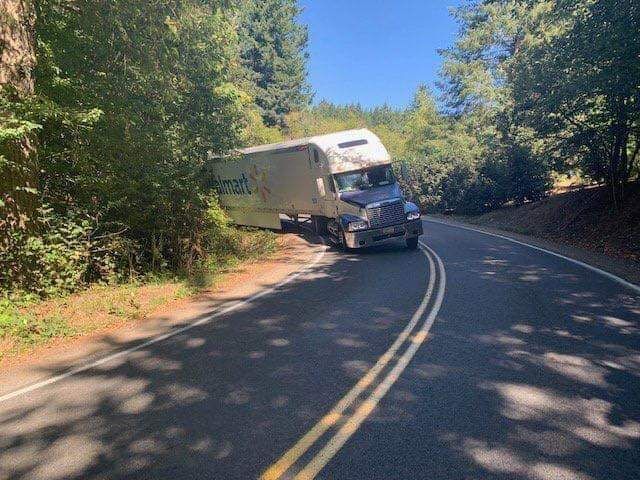Question For The Experienced Drivers Hug The Yellow Or The White
Topic 27253 | Page 2
I was told to stay left for right hand curves and right for left hand curves. Its worked for me so far
Gosh...your instructor did you no favors for suggesting to hug yellow. Lane control is really important and must be mastered by staying between the lines, not on them.
It didn’t make a lot of sense but they told every driver. I got use to it, so when I started with TMC the instructor he starts yelling hug the white line. To the point that I would start touching the rumble strips. When that happened he go that’s fine stay right stay right. I don’t argue I do as I’m told. I had a past boss say I’m a good soldier. I guess I listen well. Lol
Bobcat Bob says
I was told to stay left for right hand curves and right for left hand curves. Its worked for me so far
This is correct - drive to the "outside" of any turn it curve to allow for the the back end of the trailer's offtracking.
Jay, true enough: if you're not breaking any laws, do what you been told to get through the program. If you notice, you have just gotten "yellow", "white","center"and even "right cheek" for advice. I feel that over all, this is splitting hairs. But in a straight rust, try to stay in the middle, don't have the Yellow or the White sides.
As you drive down the highway you will see the darker area in the center of the lane, put the big toe of your right foot or your right butt cheek on that line. To account for off tracking of your trailer in turns, stay high in your turns. This means keep your tractor to the outside of the curve. As you make turns an go around turns watch your trailer. In addition to this always mind your wagon. Good luck.
Try to center yourself as best you can.
I've been on some one-lane dirt country roads where I could see the trailer license plate on the curves! Almost....


My company expects drivers to have good lane control. If you can't keep centered in your lane at all times, you won't pass a road test there. If being passed by another large vehicle, simply scoot over a little to give more space between trucks.
You shouldn't be bullying cars by hanging on the yellow line, and if you hang on the white line, you'll be doing what is known as "sandblasting ". You'll be picking up road debris from the edge of the roadway and slinging it all over vehicles behind you. It's quite rude and inconsiderate.
Me? Going straight down the road, drive center. Going around a curve, drive high side and peek -not stare- in the mirror to be sure my tandems are not going over center line. I can see what is ahead of me, so I always "drive my wagon". Some of the County and State roads in Amish country seem narrow. I certainly do not want my trailer tandems going into a ditch while driving some of these single lane roads right hand curves.
Tandems:
Tandem Axles
A set of axles spaced close together, legally defined as more than 40 and less than 96 inches apart by the USDOT. Drivers tend to refer to the tandem axles on their trailer as just "tandems". You might hear a driver say, "I'm 400 pounds overweight on my tandems", referring to his trailer tandems, not his tractor tandems. Tractor tandems are generally just referred to as "drives" which is short for "drive axles".
Tandem:
Tandem Axles
A set of axles spaced close together, legally defined as more than 40 and less than 96 inches apart by the USDOT. Drivers tend to refer to the tandem axles on their trailer as just "tandems". You might hear a driver say, "I'm 400 pounds overweight on my tandems", referring to his trailer tandems, not his tractor tandems. Tractor tandems are generally just referred to as "drives" which is short for "drive axles".
On a road like this, what's the right answer? Slow down and use some of the other lane, or make sure you don't end up going down it in the first place?

On a road like this, what's the right answer? Slow down and use some of the other lane, or make sure you don't end up going down it in the first place?
I'd bet money that particular example was not a legal truck route, and/or highly restricted by either weight or total length.
New Reply:
New! Check out our help videos for a better understanding of our forum features

















Preview:
This topic has the following tags:
Driver Responsibilities Hard Lessons Learned Mountain Driving Photos Trucking Accidents







 TT On Facebook
TT On Facebook
How far you move over in a curve depends on the radius of it. Some are worse than others. You're on the right track, though. See what I did there.